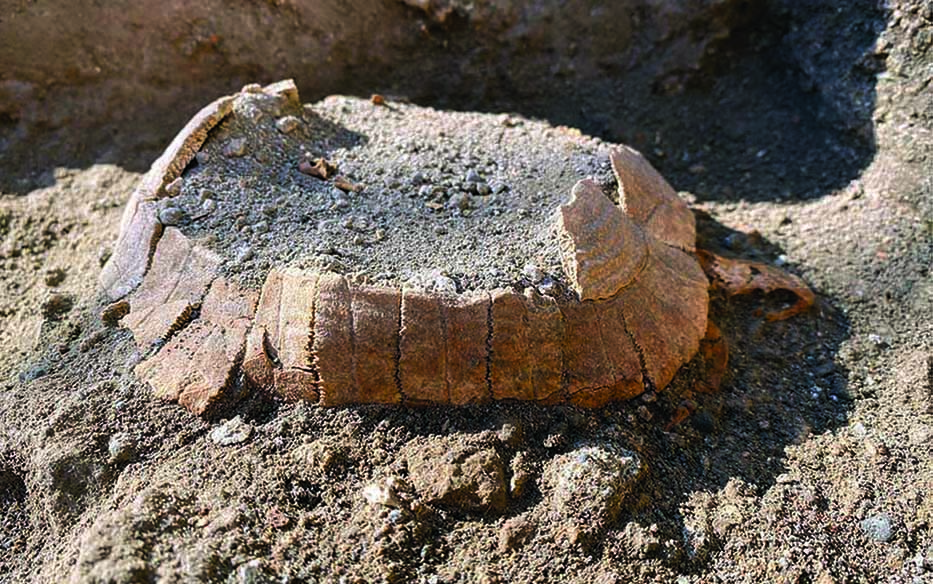Archaeologists at Pompeii have discovered the remains of a small, pregnant tortoise, who died before Mount Vesuvius erupted in AD79 and destroyed the city. The 14-cm long reptile provides more clues to the final phase of the city, which was being rebuilt after an earthquake in AD62. The pregnant "Testudo hermanni" appears to have buried into a ruined, unused shop as a safe space to lay her egg but died with her egg still inside her.
"The animal's intrusion was not noticed by those in charge of the shop's refurbishment and its remains were covered up unseen," the Pompeii archaeological park said in a statement. Pompeii saw large-scale rebuilding after the powerful quake, which caused major damage. "When many houses were being rebuilt-the whole city was a building site - evidently some spaces were so little utilized that wild animals could move around and enter and try to find a place to lay eggs," said Pompeii's director general, Gabriel Zuchtriegel.
 The remains of an egg of a land tortoise found enshrined in the carapace of a land tortoise.
The remains of an egg of a land tortoise found enshrined in the carapace of a land tortoise.The tortoise was found near Pompeii's Stabian Baths complex, which was expanded following the earthquake. The giant eruption of Vesuvius, nearly 2,000 years ago, devastated the ancient city, covering everything in its path with volcanic ash. That sediment helped to preserve many buildings in almost their original state, as well as the curled-up corpses of Vesuvius' victims. Pompeii is Italy's second most visited tourist destination after the Colosseum in Rome. - AFP











